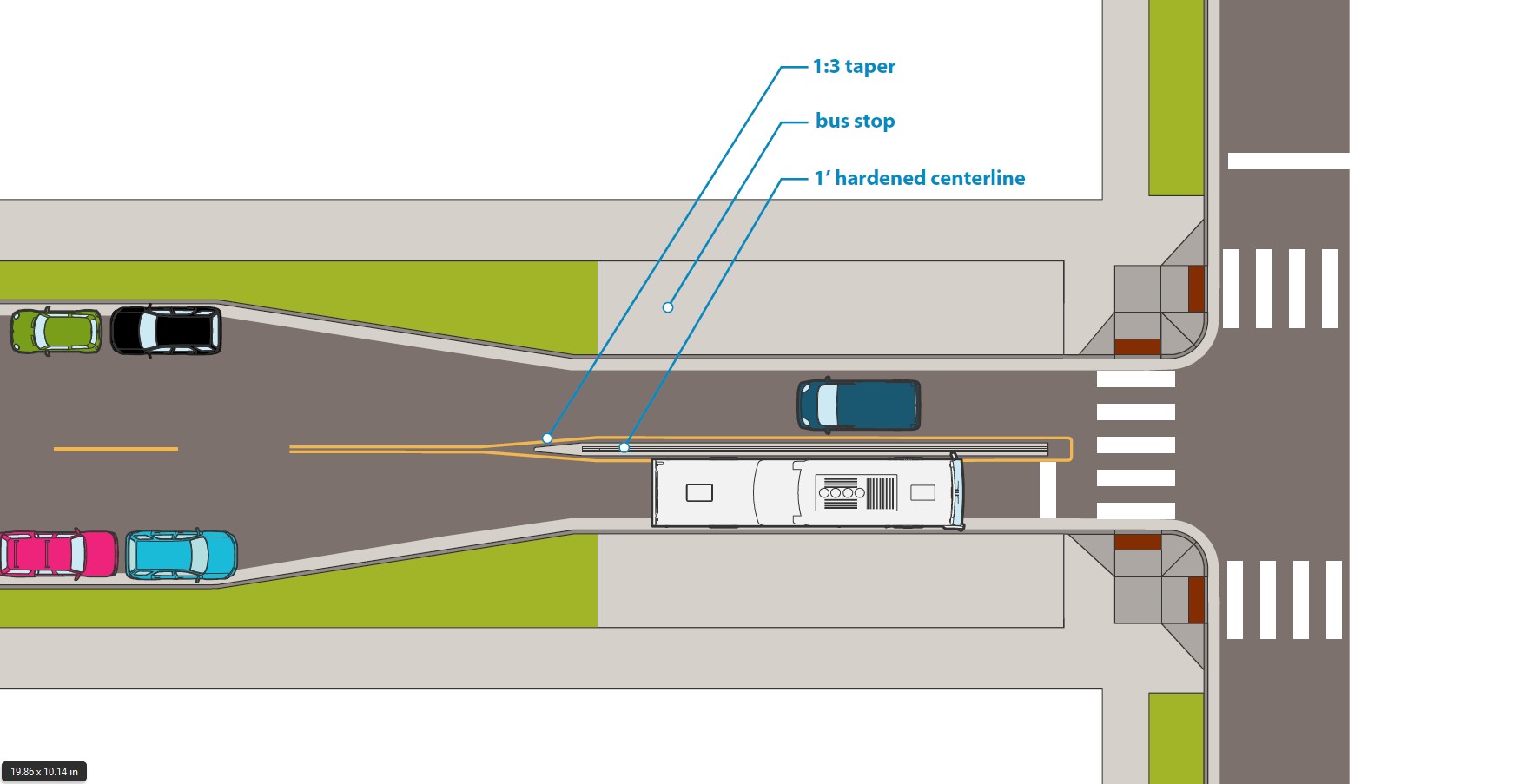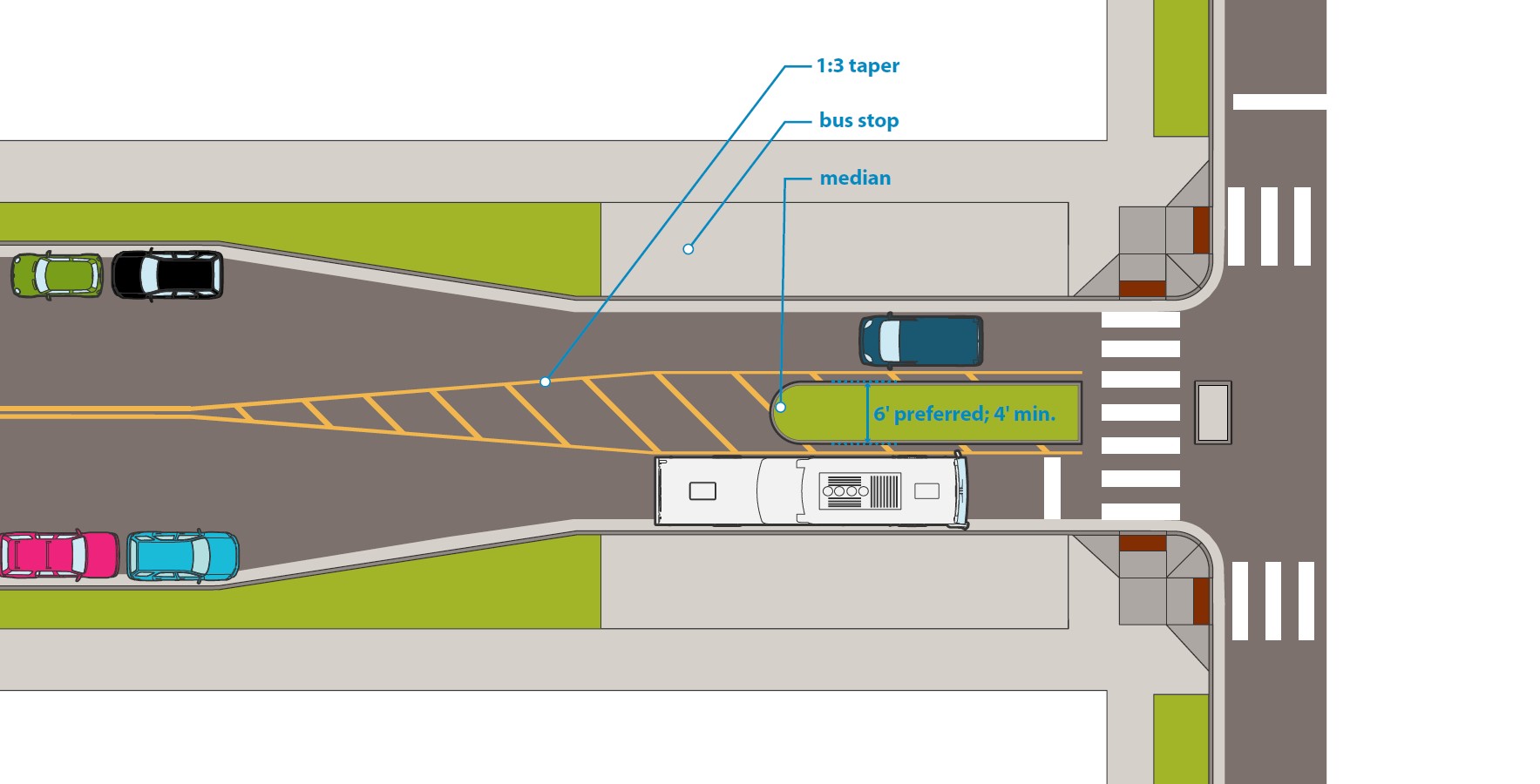3.6F In-lane bus stops
Search Content
Download PDF
Print Guide
Introduction
In-lane bus stops are where a transit vehicle stops to load and unload passengers in a through traffic lane. In-lane bus stops are preferred for bus rapid transit routes because they do not require the bus to merge back into traffic after making the stop, which is faster. They also can be beneficial for regular-route transit stops as they expand the available space for transit stop and sidewalk zone uses and allow for tighter, safer intersections. On streets with a single traffic lane in a direction, designers should work to mitigate the safety concerns of drivers passing a stopped bus.
Designers should discuss with Metro Transit and Traffic and Parking Services when determining if an in-lane bus stop is appropriate in an individual context. These factors should be considered:
Traffic volumes, including annual daily traffic, peak hour traffic, directionality, and turning movements;
Transit service, including frequency, directionality, stop spacing, stop consolidation, ridership volumes, whether there is off-board fare collection, and bus size; and
Context, including number of traffic lanes, driveway access, loading zones, intersection control (stop, signal, RRFB), and cross-street modal networks.
Design Considerations
See also transit stop guidance. Designers should coordinate with Metro Transit.
|
Lane widths |
The lane where the bus stops should generally be the same width as the traffic lane leading up to the bus stop to discourage vehicles trying to pass the bus in the same lane. |
|
Curb extensions |
If there is parking, curb extensions should be implemented with bus stop to align with the bus doors. |
|
Hardened centerlines and medians when stopping in sole traffic lane |
A hardened centerline or a median should be considered at an in-lane bus stop when a bus will be stopping in the sole traffic lane in a given direction. The hardened centerline or median is provided to reduce the likelihood that drivers will pass the bus.
|





